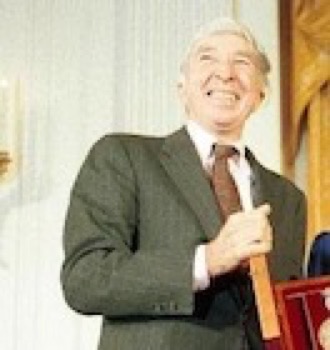Literary Critique - A&P
May/04/2016 03:15 PM Filed: Literary Critiques

Photo Credit: George Bush Presidential Library
(Wikimedia Commons)
John Updike and the Emerging Feminist
Published in 1962, Updike’s “A&P” depicts a young grocery store clerk working during a decade when women asserted their independence by flaunting sexuality. Written in the first person, this is Sammy’s description of the events that led to his choice to quit his job in defense of a girl’s right to walk into the store underdressed.
Sammy sees all women as sexual creatures and analyzes their qualities as he works. Queenie captures his attention and sympathy when the manager reprimands her for shopping in her two-piece swimming suit.
It is Sammy’s attraction to Queenie that leads to his act of defiance. His view of her as a member of the opposite sex is typical, his reaction to her atypical. The only difference is personal, a subjective response to her body. Other women have not attracted him to the point where he would defend them in any confrontation.
Shortly after he quits and lays down his apron, Sammy looks for Queenie and her friends outside. Although he anticipates her departure, his desire to find her indicates his motivation. At the moment he makes his impulsive decision, his plan thereafter is apparent.
Sammy follows through with his rebellious statement and exits. In the end he regrets his actions and reflects, “…my stomach kind of fell as I felt how hard the world was going to be to me hereafter.”
Although it may seem ridiculous to assert that Updike encouraged emerging feminism by supporting a woman’s right to disrobe, his message in this story does point to his interest in unrestrained self-expression.